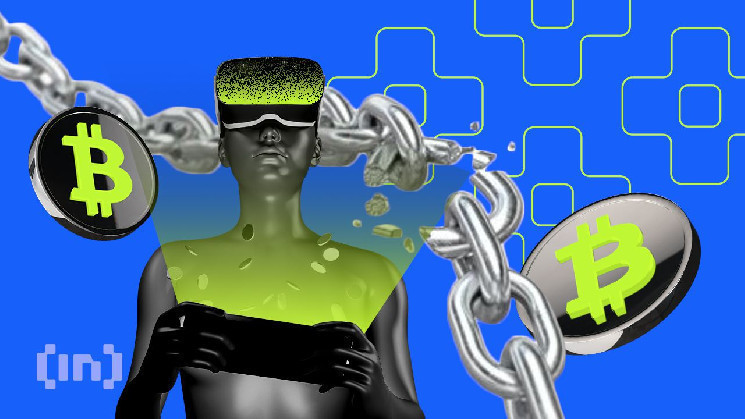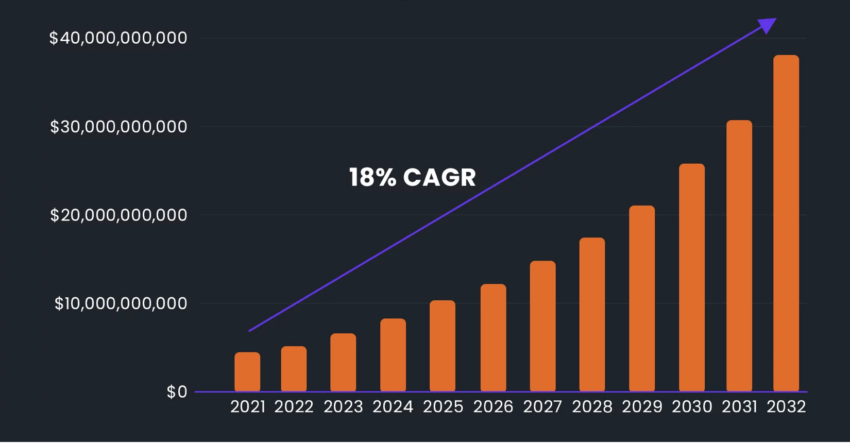Web3 Is the Future of Gaming. How to Ensure Safe Adoption?

Web3 gaming continues to enjoy rapid growth compared to conventional gaming setups. However, given the highly damaging hacks in the past, how can users ensure safe adoption?
Gaming has come a long way since the early days of console and PC gaming. With the advent of new technologies such as blockchain and decentralized systems, we are witnessing a revolution in the field: Web3 gaming. Web3 is the next evolution of the internet, more decentralized, open, and transparent than Web2. With Web3 gaming, players can own their in-game assets, participate in the governance of game ecosystems, and earn real-world value for their gameplay.
But as the innovation continues to shine, the industry must not neglect safe adoption.
Advantages of Web3 Gaming
Ownership
The first and most significant benefit of Web3 gaming is ownership. Traditionally, gamers don’t own the assets they collect and use in games. Game developers or publishers usually own these assets, which can be lost if the game shuts down or the developer goes out of business.
Web3 gaming changes this by using blockchain technology to create unique digital assets players own. These assets are stored in decentralized networks, making them independent of game developers or publishers. This means that players can buy, sell, and trade their assets freely, just like in the real world. It also means that players have more control over their assets and can decide how they are used within the game ecosystem.
Governance
The second benefit of Web3 gaming is the ability to participate in game governance. In traditional gaming, the game’s rules are set by developers, and players have little say in how the game is run. With Web3 gaming, players can participate in the governance of game ecosystems by using decentralized voting systems.
These systems allow players to propose and vote on changes to the game’s rules, economy, and even the game’s development itself. This gives players a sense of ownership and control over their game, leading to a more engaged and invested community.
Passive Income
The third benefit of Web3 gaming is the ability to earn real-world value for gameplay. With traditional gaming, players may earn in-game currency or rewards, but these have no real-world value. In Web3 gaming, players can earn cryptocurrency or other digital assets that can be traded for real-world money. This opens up new opportunities for players to earn a living by playing games, forming a new category of “play-to-earn” games. This also incentivizes players to stay engaged with the game and its ecosystem, driving growth and creating new revenue streams for developers.
Interoperability and Security
The fourth benefit of Web3 gaming is the potential for cross-game interoperability. In traditional gaming, each game is a closed ecosystem, and assets cannot be transferred between games. With Web3 gaming, assets are stored on decentralized networks, making it possible for assets to be shared between games. This results in new possibilities for game developers to collaborate and offer new gaming experiences that are not limited by the boundaries of individual games. It also means that players can use their assets across multiple games, increasing their value and creating new opportunities for gameplay.
The fifth benefit of Web3 gaming is transparency and security. In traditional gaming, players must trust game developers to run the game fairly and securely. With Web3 gaming, the game’s rules are transparent and enforceable through smart contracts. This means that players can trust that the game is running as intended and that their assets are secure. It also means that game developers can build trust with their players by providing transparency and accountability.
The Road to Mass Adoption
Despite such attributes, struggles continue to exist. Thus affecting the overall adoption rate. Per the November 25, 2022, survey, users still needed help to assess the latest innovation compared to conventional gamers. Besides that, the security concept remains a significant concern following major attacks last year.
Overall, boosting visibility and security can be essential to user adoption. To show support from the former, gaming platforms undertook initiatives to aid the cause. For instance, last month, Elixir Games announced the formation of a strategic partnership with Square Enix. The collaboration generated visibility and adoption of Web3 games among traditional gamers.
“The partnership will allow millions of gamers to explore quality Web3 games through a platform that hides Web3 technology under the hood and offers a simple, seamless experience to the traditional gamer,” the official announcement added.
Executives from both sides have shown optimism about aiding Web3 gaming’s mass adoption. And dealing with a top concern, that is, security.
Cybersecurity is a crucial factor in driving mainstream adoption of Web3 gaming. With the increasing use of blockchain technology and decentralized systems, Web3 gaming presents a unique set of cybersecurity challenges that must be addressed to ensure the safety and security of players and their assets.
Therefore, cybersecurity is critical in driving mainstream adoption of Web3 gaming. To shed more light on the concept, cybersecurity expert Steven Walbroehl, co-founder and CISO of Halborn, shared his thoughts with BeInCrypto.
To drive mainstream adoption of Web3 gaming, addressing cybersecurity concerns and providing players with a secure and trustworthy gaming experience is essential. This requires a multi-faceted approach, including secure coding practices, strong encryption, and robust network security measures.
“Web3 gaming is introducing for the first time models in gaming that are trying high-value in-game items to high-value off-chain assets. Concepts such as Play-to-Earn are making games a source of financial wealth. And when there is money to be made, there is money to be stolen. Cybersecurity is growing in importance as the threat continues to rise,” Walbroehl stated.
Past and Future Implications
One key aspect of Web3 gaming security is the use of blockchain technology. The decentralized nature of blockchain provides increased security, as it is much more difficult to manipulate or corrupt data stored on a blockchain network. Yet, the nascent industry still needs time to evolve.
Compared to traditional games, Web3 games can be hacked in different ways through cheating or modeling off of logic that breaks the core rules of the games. Such as exploiting bugs to gain revenue or stealing private keys for asset access. Walbroehl opined that this is similar in risk but fully dependent on the game’s logic and play format.
Nonetheless, the industry can learn from past instances. Talking about the future potential, Walbroehl asserted:
“I think it will move more towards Metaverse-style gaming once it becomes more user-friendly, as well as more gambling/betting/Play-to-Earn style games to attract a culture that wants to make a career from playing games. We will also see more and more ‘side-chain’ Layer 2 type of games since the main Layer 1 chain (Ethereum) can’t fully host a game due to speed/bandwidth and gas fees.”

Web3 Gaming market growth Source: Fungies.io
By prioritizing cybersecurity, developers can help drive mainstream adoption of Web3 gaming and unlock the full potential of this exciting new technology.







 Bitcoin
Bitcoin  Ethereum
Ethereum  Tether
Tether  USDC
USDC  Dogecoin
Dogecoin  Cardano
Cardano  TRON
TRON  Bitcoin Cash
Bitcoin Cash  Chainlink
Chainlink  Polygon
Polygon  Litecoin
Litecoin  LEO Token
LEO Token  Dai
Dai  Ethereum Classic
Ethereum Classic  Hedera
Hedera  Cronos
Cronos  Cosmos Hub
Cosmos Hub  Stellar
Stellar  Stacks
Stacks  OKB
OKB  Maker
Maker  Monero
Monero  Theta Network
Theta Network  Algorand
Algorand  NEO
NEO  Gate
Gate  EOS
EOS  KuCoin
KuCoin  Tezos
Tezos  Synthetix Network
Synthetix Network  IOTA
IOTA  Tether Gold
Tether Gold  Bitcoin Gold
Bitcoin Gold  TrueUSD
TrueUSD  Enjin Coin
Enjin Coin  Zilliqa
Zilliqa  Holo
Holo  Ravencoin
Ravencoin  0x Protocol
0x Protocol  Siacoin
Siacoin  Qtum
Qtum  Basic Attention
Basic Attention  Zcash
Zcash  Dash
Dash  NEM
NEM  Decred
Decred  Ontology
Ontology  Lisk
Lisk  Waves
Waves  DigiByte
DigiByte  Status
Status  Nano
Nano  Pax Dollar
Pax Dollar  Numeraire
Numeraire  Steem
Steem  Hive
Hive  OMG Network
OMG Network  Huobi
Huobi  BUSD
BUSD  Ren
Ren  Bitcoin Diamond
Bitcoin Diamond  Bytom
Bytom  Kyber Network Crystal Legacy
Kyber Network Crystal Legacy  HUSD
HUSD  Energi
Energi  Augur
Augur